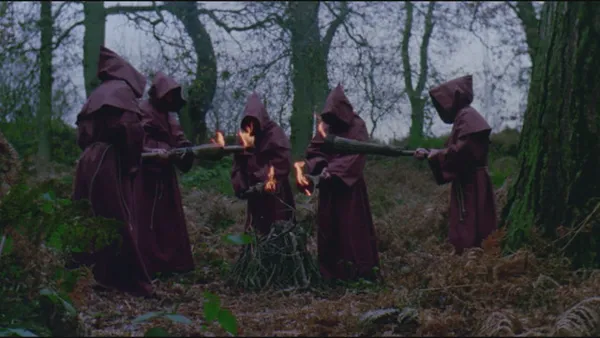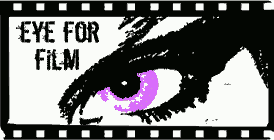Eye For Film >> Movies >> The Last Sacrifice (2024) Film Review
The Last Sacrifice
Reviewed by: Jennie Kermode

Screened as part of the Frightfest strand at the 2025 Glasgow Film Festival, The Last Sacrifice has been billed as a film about the murder that inspired The Wicker Man. Whilst this will doubtless appeal to some, others will already have seen countless Wicker Man-related films, and will be more hesitant. The good news is that Rupert Russell’s documentary is really about much more than that. The said murder is fascinating in its own right, not least for the ways that it reveals connections backwards and forwards in time. As Russell presents it, it’s a keystone in the history of neo-Paganism and the birth of the folk horror genre. His film is a patchwork of ideas as varied as the fields of England when seen from above, yet somehow everything comes together.
Charles Walton was, as far as anyone has been able to prove, an unremarkable man – a 74-year-old agricultural worker who spent his whole life in his native village of Lower Quinton in the Cotswolds, and a man of very particular habits who kept to a strict schedule, always home by late afternoon. So how was it that on Valentine’s Day 1945 he came to be found in a hedgerow, pinned to the ground by a pitchfork, with his throat slashed open and the sign of the cross carved into his chest? The case was so shocking that it immediately attracted attention from all across the country. Celebrity detective Fabian of Scotland Yard, who had never failed to solve a case, would investigate in vain. So would Egyptologist and witchcraft-focused anthropologist Margaret Murray, the epitome of the middle aged amateur lady detective beloved by English novelists and television producers. To this day, no-one really knows what happened, but wild possibilities seeded themselves in the public imagination, and from them, still stranger things began to grow.
Who was Charles Walton really? An ordinary man killed over money or some petty village dispute? The victim of a coven of witches taking action after a poor harvest? A witch himself? Just when you might think you’ve got a handle on it, Russell shifts the ground yet again by unearthing a bizarre connection to another murder committed just a few miles away in 1875, and also involving a body being pinned down with a pitchfork. The villagers were apparently reluctant to talk about Charles, behaving as if they were covering something up. Was there a tradition that they didn’t want outsiders to know about? With hints of the supernatural, the lines between fact and fiction, knowledge and folk belief begin to blur.
It’s not hard to see how this situation could have inspired creative individuals in the decades that followed. Russell also links it to the development of neo-Pagan and Wiccan traditions, as the newspapers did at the time, and takes in some of the other incidents that attracted the attention of those with an interest in the supernatural. Most prominent amongst these is the tale of the Highgate vampire, which inspired a number of films but may itself have stemmed from one. As these stories develop, montages of clips from folk horror films provide illustration and situated them in their psychic context. These brilliantly edited segments interweave news footage from the period, and it is striking how easily face and fiction mesh together. Unless you are familiar with all the films, you will struggle to tell them apart.
Profiles of prominent figures from the world of witchcraft round out the story, and Russell has assembled an impressive collection of experts to help tell it. So diverse are they in their approaches to the subject that it’s quite remarkable to find them involved in the same project. What unites them, perhaps, is an appreciation of Russell’s central idea: that if we look beyond what is merely true or false, we can explore the much more interesting business of what the public believes, and the roots and consequences of its beliefs, and the way these are expressed in art and in day to day life. “Witchcraft is the only religion that the UK has given to the world,” it is noted, and the film is steeped in the country’s 20th Century identity crisis: in psychedelia, the sexual revolution and class war. All these things shape thought and actions even in the sleepy blue hills of the Cotswolds, amongst those enjoying a quiet afternoon pint at the Swan or dancing secretly by night around the Rollright Stones.
It’s a heady brew – and when you think it’s gone as far as it can, Russell produces, as if from nowhere, the most peculiar of epilogues, in which the star of a popular children’s television programme recalls an adventure in the shadow of Meon Hill whose conclusion still haunts him to this day. What began with a body found beside a hedgerow stretches backwards and forwards through time to find its way into every aspect of the country’s culture. Many viewers will likely come up with connections of their own. In this tangled tapestry, Russell has captured the soul of a nation. Pull its threads and any vision you may have entertained of a modern civilisation built on rational principles will begin to unravel.
Reviewed on: 09 Mar 2025















